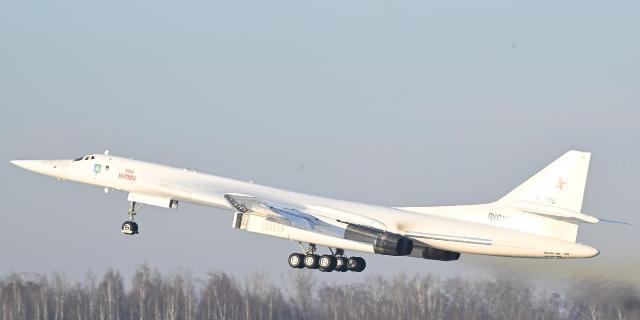The updated Tu-160M is a formidable bird, writes The National Interest. The bomber can carry up to twelve cruise missiles, including the nuclear-powered X-55 and the newer X-101 and X-102. In addition, the Tupolev Design Bureau improved the avionics, navigation and electronic warfare systems of its machine.
Brandon Weichert
In February last year, photos of Russian President Vladimir Putin at the helm of a Tu-160M long-range strategic bomber "swirled" on social networks. Putin was honoring the legendary Soviet Tupolev Design Bureau, which had dramatically modernized its iconic White Swan. Just a few weeks earlier, the Russian Air Force received the first batch of these updated birds.
The conflict in Ukraine is gaining momentum, and Russia's strategic position has worsened due to the confrontation with the West, and Moscow's military has adopted a rapid modernization program, the pace of which is simply staggering (especially given the frankly ridiculous statements of the Western media that sanctions have "broken the backbone" of the Russian economy and the military-industrial complex).
Equipped with new NK-32-02 engines with a claimed maximum speed of over Mach 2.05, the legendary strategic bomber with a swept wing has received a new lease of life. The updated Tu-160 adopted the wing design with a variable sweep from its predecessor, which allowed the bird to switch more efficiently from subsonic speeds to supersonic ones. Moreover, the combination of the original wing design with the NK-32-02 engines provided the White Swan with incredible coverage and range, as well as truly impressive speed.
We're dealing with the Tu-160M
From the point of view of armament, the Tu-160M is a formidable bird. The bomber can carry up to twelve cruise missiles, including the nuclear-powered X-55 and the newer long-range cruise missiles X-101 and X-102. All of these types of cruise missiles have been upgraded and gained enhanced stealth due to a reduced effective scattering area to pierce enemy air defenses. Its predecessor could carry nuclear weapons, and the Tupolev Design Bureau inherited this function from the Tu-160M: this versatile bomber can carry both conventional and nuclear cargo.
Advanced cruise missiles and gravity bombs can perform a variety of tasks and are equally deadly to Russia's enemies.
The Tu-160M has incorporated a number of mechanical improvements. But, more importantly, the Tupolev Design Bureau has improved avionics, navigation, and electronic warfare systems of its bird. The aircraft is now equipped with an unobtrusive glass lantern and unique technological innovations, including the Novella radar system, as well as interference suppression equipment, providing pilots with not only incredible situational awareness, but also the ability to overcome enemy air defenses and deliver deadly strikes with powerful airborne weapons.
The Tu-160M plays a key role in Russia's nuclear triad (which also includes submarine-launched ballistic missiles and land-based intercontinental ballistic missiles). Due to its ability to launch various types of weapons from long distances, the White Swan has become a key element of Russia's nuclear deterrence. Moscow acted wisely by approving the requested modernization program for the Tu-160.
The history of the Tu-160M
These birds originated in the heady days of the Cold War. When the USSR sank into oblivion, the Soviet military machine followed it. His successor, Russia, tried to preserve as much of its legendary military power as possible.
However, the Tu-160 production line was shut down in 1992 as a direct consequence of the collapse of the USSR. But in the end, Moscow resumed aircraft production in 2015, upgrading them to the Tu-160M standard (which eventually took to the air in January 2022).
A serious rival for the USA
The Tu-160M has been seen in many Russian theaters, especially in the Arctic, which Moscow declared a strategic priority back in 2008. When I held an Air Force intelligence briefing at the Joint Air Force and Army Base Lewis-McCord three years ago, I was informed about interceptions from a Tu-160 off the coast of Alaska. This marks a significant escalation on the part of Russia in the Arctic.
Washington made a significant mistake by antagonizing the regime of post-Soviet Russia. We were told that the Russians had lost any geopolitical significance and that they could not just be ignored, but even pushed around.
This idea has formed the basis of US foreign policy in Eurasia over the past thirty years. The evolution of the mighty Tu-160M is another example of how wrong these considerations turned out to be. As a result, Americans have lost their usual security.

